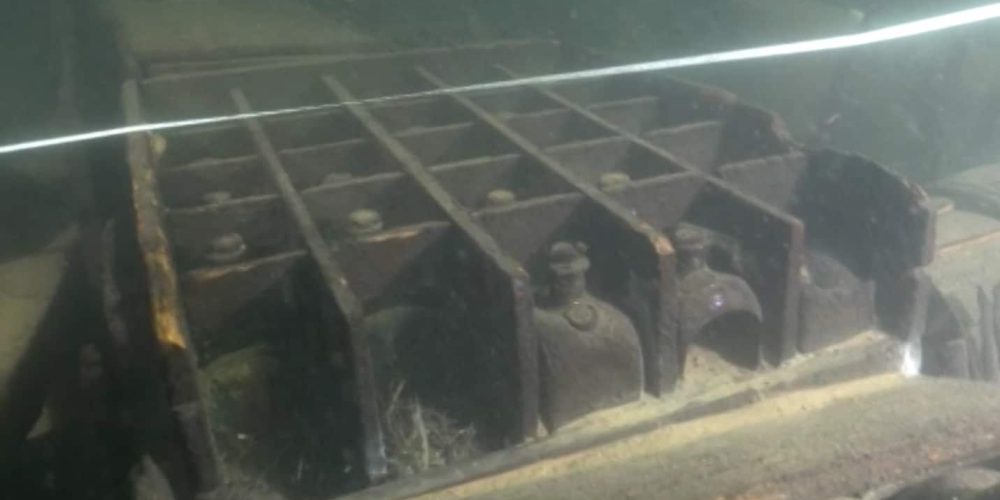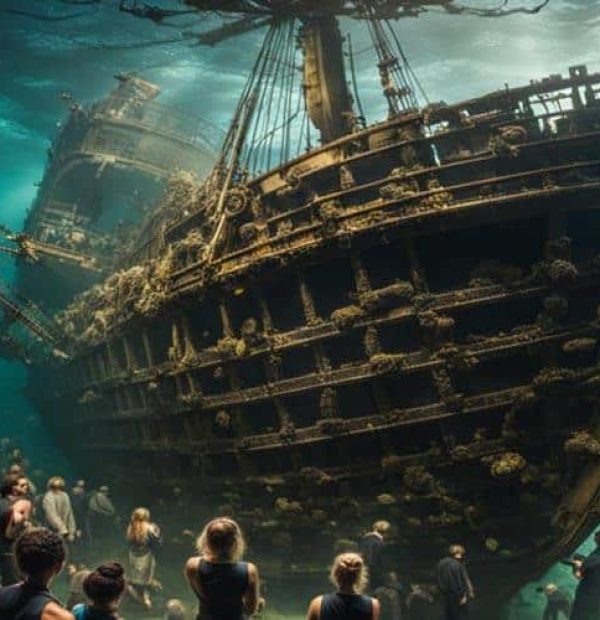Thursday, 16 May 2024
Menu

Specialists from the Underwater Research Centre of the Russian Geographical Society have begun exploring and documenting the wreck of a wooden vessel dating back to the early 18th century, which lies in the Russian part of the Gulf of Finland. Their preliminary findings indicate that it is probably the wreck of a Dutch merchant ship.

The vessel was probably heading for the “Venice of the North”, as St. Petersburg, then the new capital of the Russian Empire, located in the Neva Delta, was commonly called. On closer inspection of the wreck, hundreds of glass bottles were found within the wreck, which is why the site was given the working name “Butilocznik”.
In 2018, Baltic Fleet sailors accidentally discovered an unknown object lying on the bottom of the Gulf of Finland near Lavansaari Island. The new discovery immediately drew the attention of specialists from the RTG Underwater Research Centre. In 2019, archaeologists dived on the position for the first time and ascertained that there was a wooden ship on the bottom.
The wreck lies at a depth of over 50 metres. It has no masts or anchor windlass. Specialists of the Underwater Research Centre of the Russian Geographical Society have hypothesised that it is probably the remains of a Dutch tjalka – a cargo sailing ship. According to preliminary examination, the ship probably sank in the middle of the 18th century.

Detailed research at the site began in August 2020. On board the ship, divers found an interesting cargo of hundreds of glass bottles: narrow and wide, factory-made and handmade. The glass industry of the 18th century is represented on the ship in all its diversity.
Unfortunately, most of the bottles have not survived. From the scent mark and the type of bottles, it is possible to determine what the contents of the individual vessels were. On a few types of bottles, a stamp with the liquor designation was also found. In the past, gin was stored in such vessels.
Most likely, the ship was sailing to St Petersburg and was carrying bottles of alcohol in its hold. But what exactly was their content? It is difficult to say, because now it is simply rotten organic matter. Several bottles smell of pine needles and eucalyptus,” said Roman Prokhorov, underwater archaeologist and conservator of the Underwater Research Centre of the Russian Geographical Society
Researchers from the Underwater Research Centre of the Russian Geographical Society have already contacted the staff of the State Hermitage Museum and, as they found out, there are no such vessels in the museum’s collection. The archaeological community is eagerly awaiting the artifacts excavated from the wreck.

Specialists continue to examine the vessel. The exact age of the vessel still remains to be established in order to understand where the ship sailed to and for what purpose. This will require painstaking work in the archives in search of traces of the unusual and mysterious vessel.










Welcome to DIVERS24.COM, your daily source of scuba news, freediving, scuba diving information, and equipment reviews. Our comprehensive coverage of the dive industry from A to Z provides you with all the latest scuba news, training updates, underwater photography tips, and everything else related to scuba diving. Whether you’re a beginner or an experienced diver looking for more knowledge about scuba gear or techniques – we’ve got it covered! With our in-depth articles written by experienced divers who have been there and done that, you are sure to find exactly what you need here at Divers24.com. Dive into scuba news today!
Underwater Media Sp. z o.o.
Szafarnia 11/F8,
80-755 Gdansk, Poland
Welcome to DIVERS24.COM, your daily source of scuba news, freediving, and scuba diving information. Sign in for a weekly news update and discount coupons for dive gear and apparel.
@2023 - underwatermedia.pl. All Right Reserved. Designed and Developed by Tworzenie stron internetowych Gdansk

The Divers24 portal is currently the largest online medium treating diving in Poland. Since 2010 we have been providing interesting and important information from Poland and around the world on all forms of diving and related activities.
Contact us: info@divers24.com